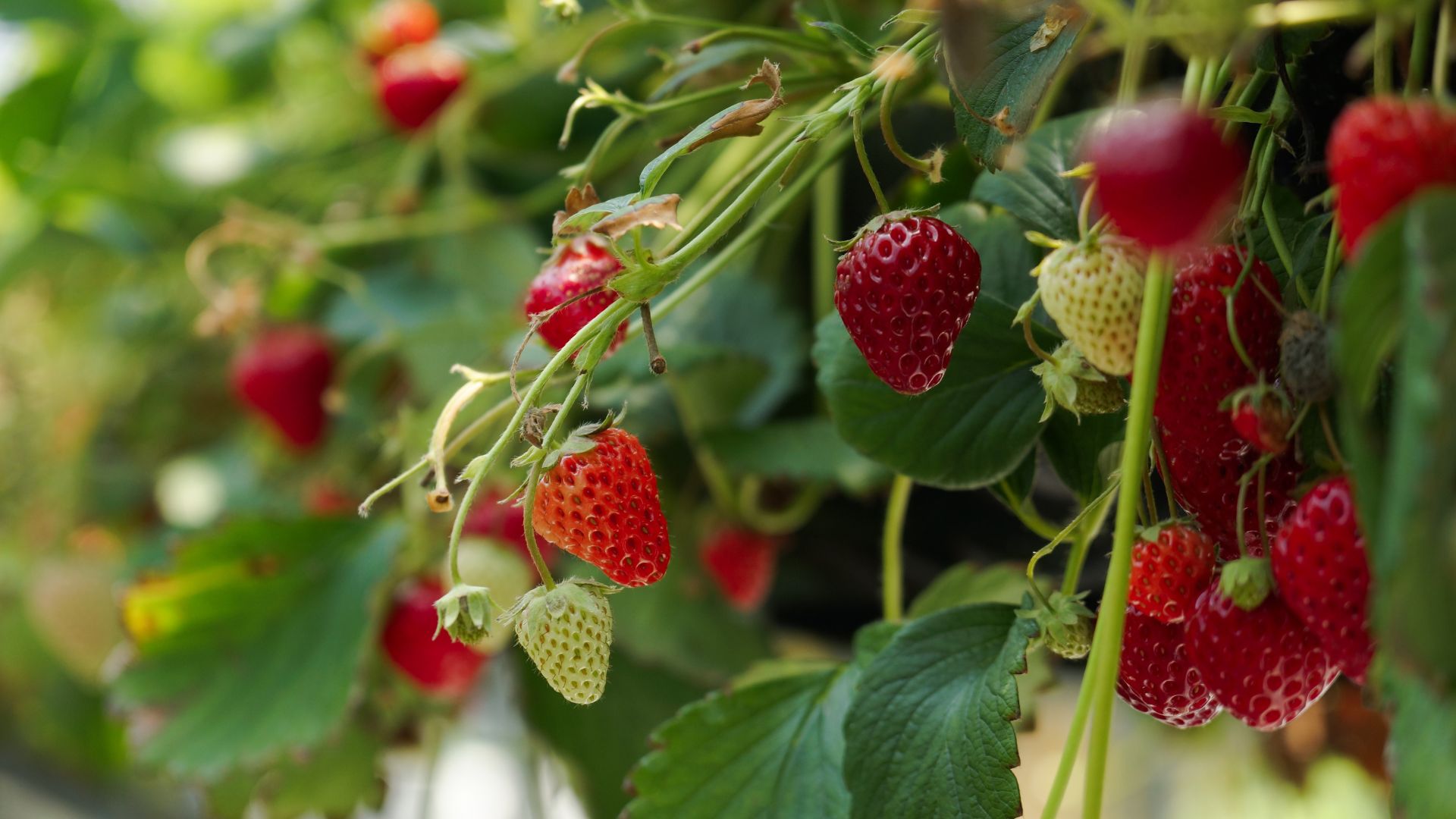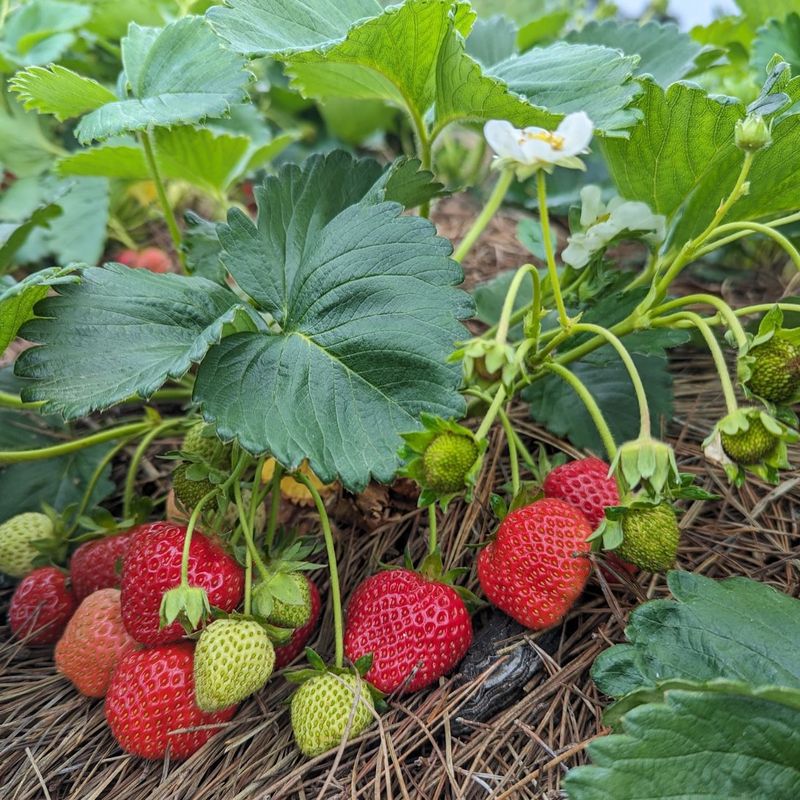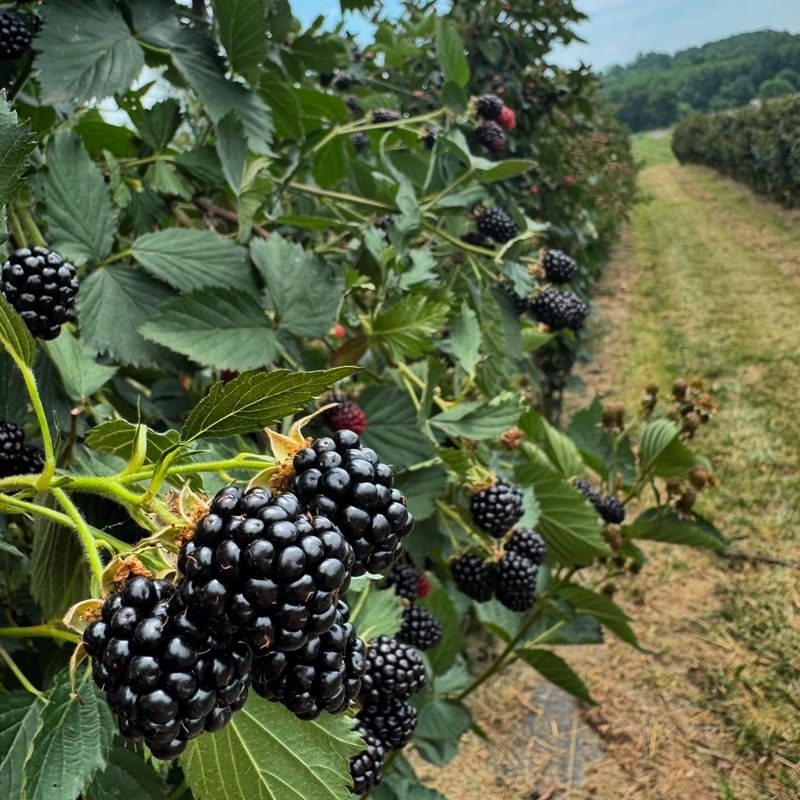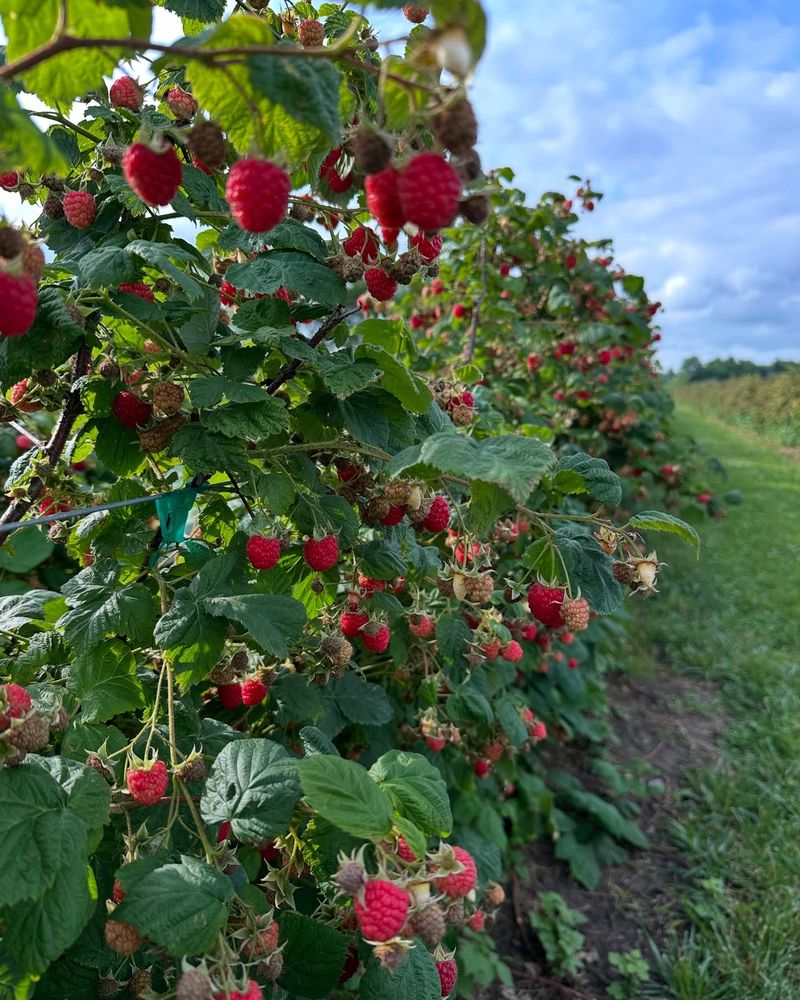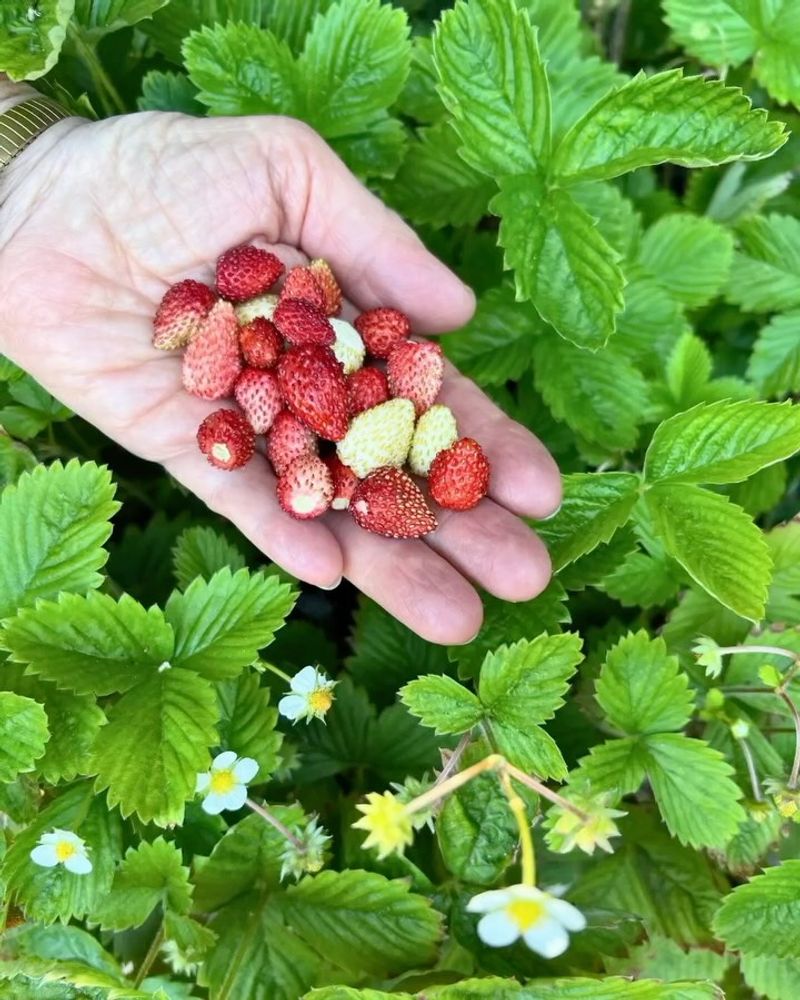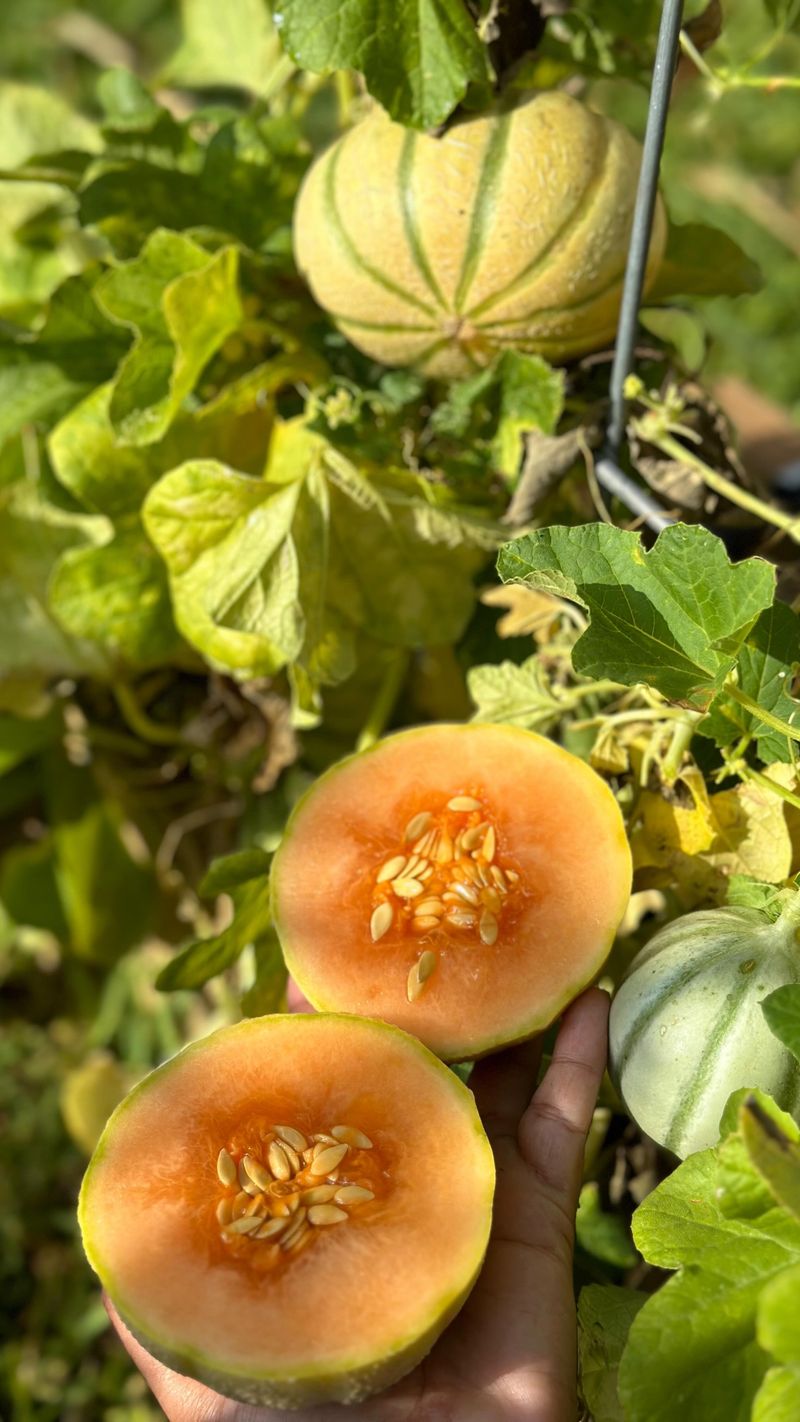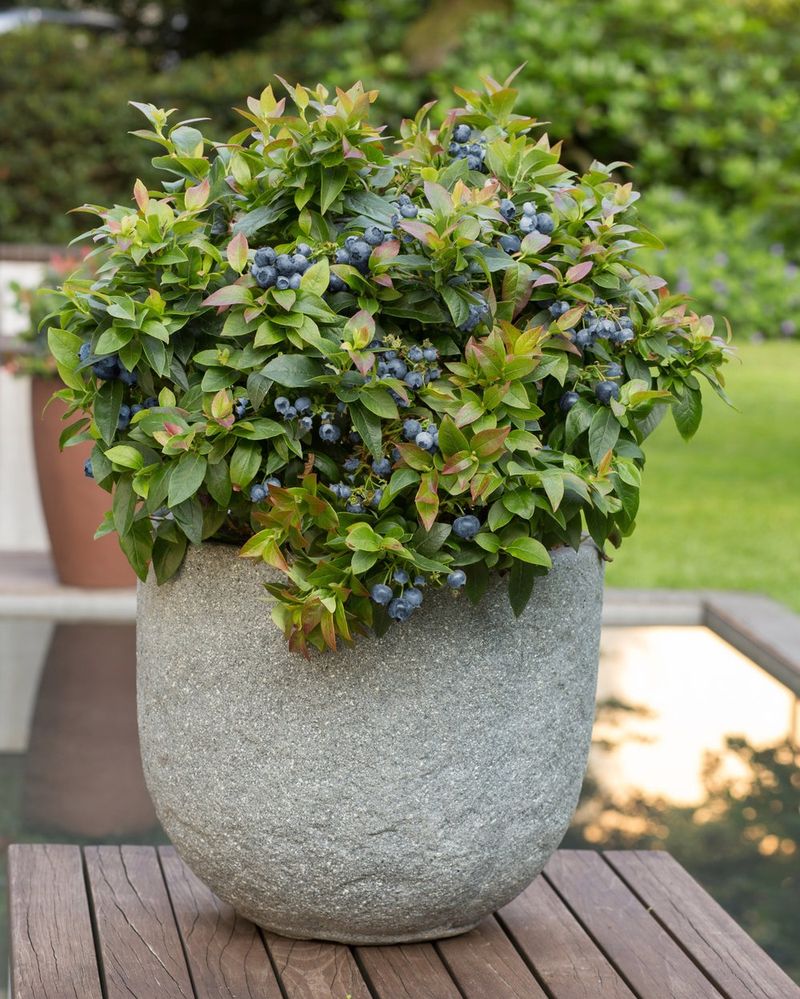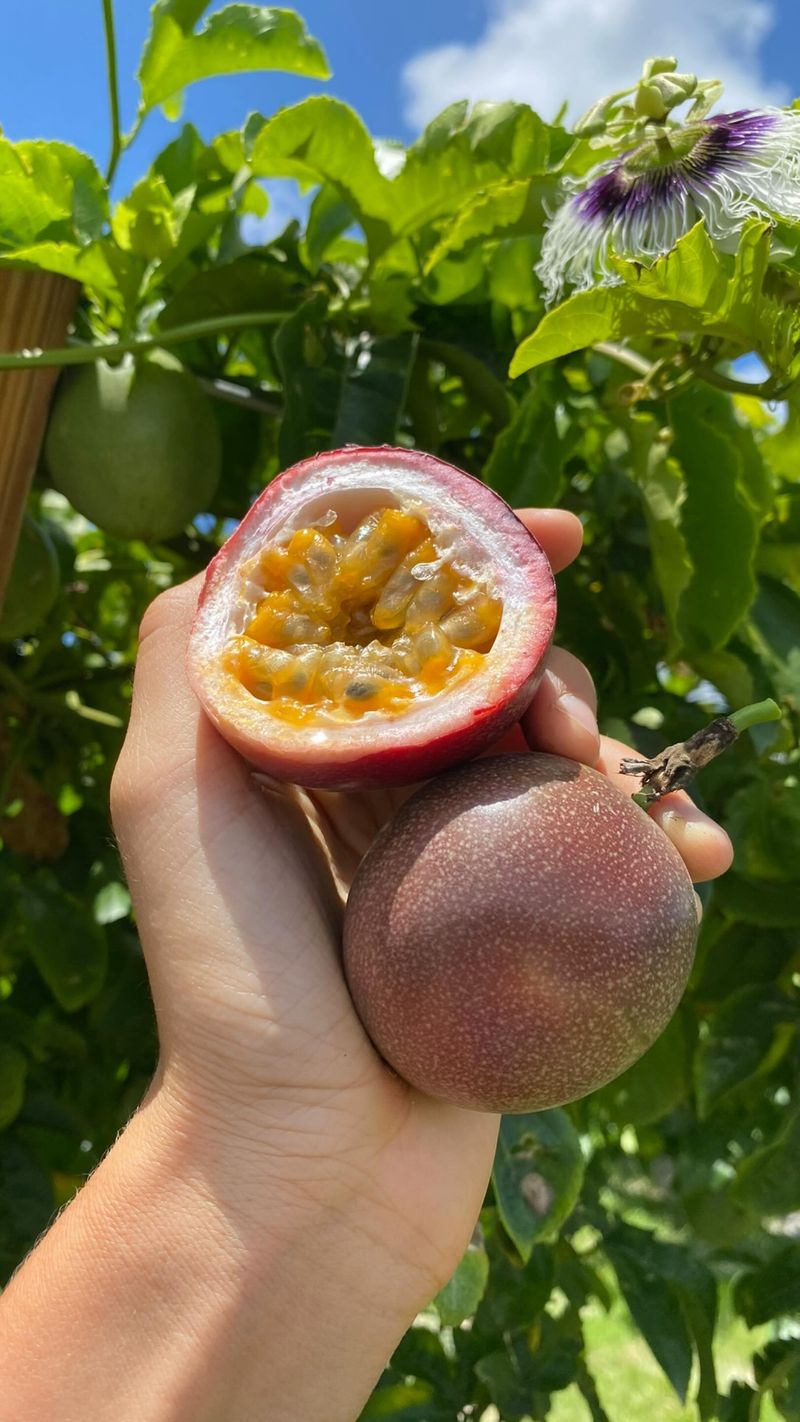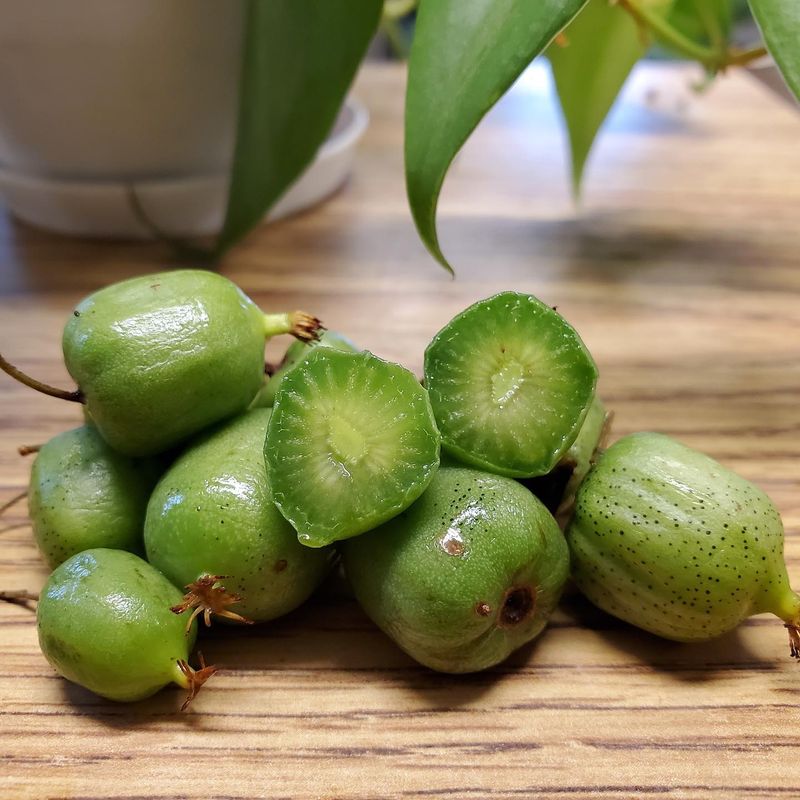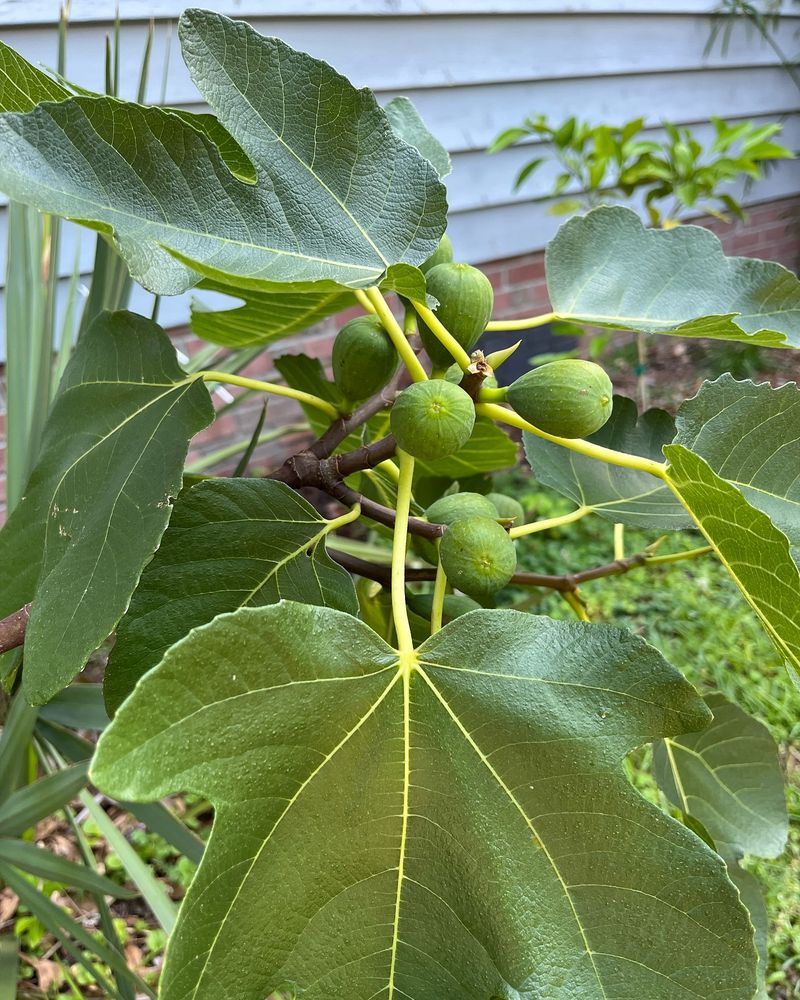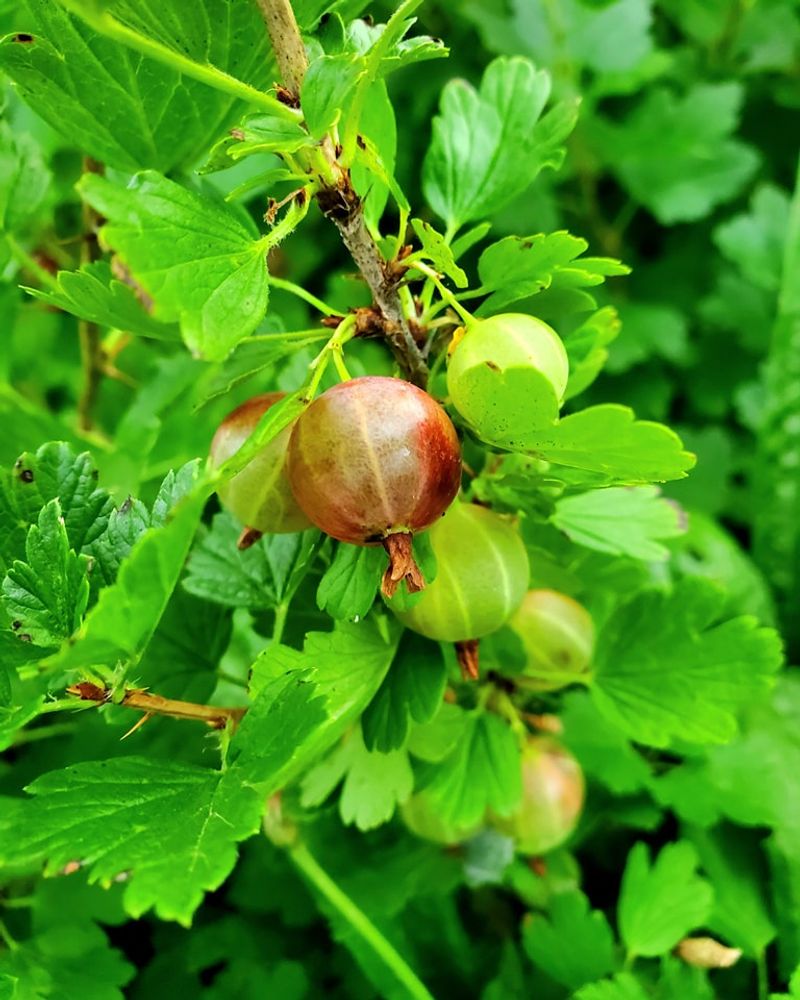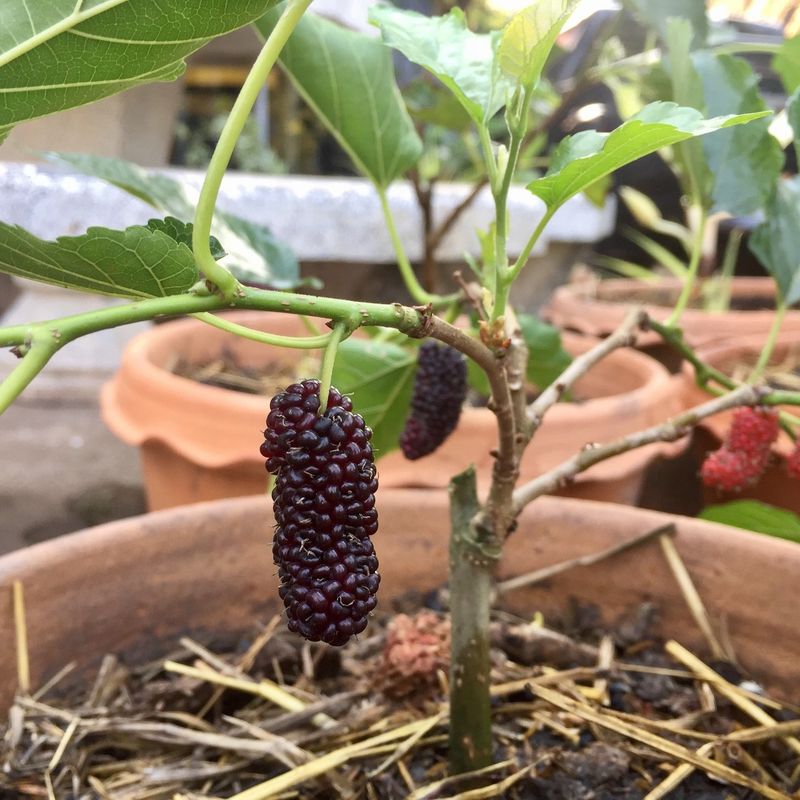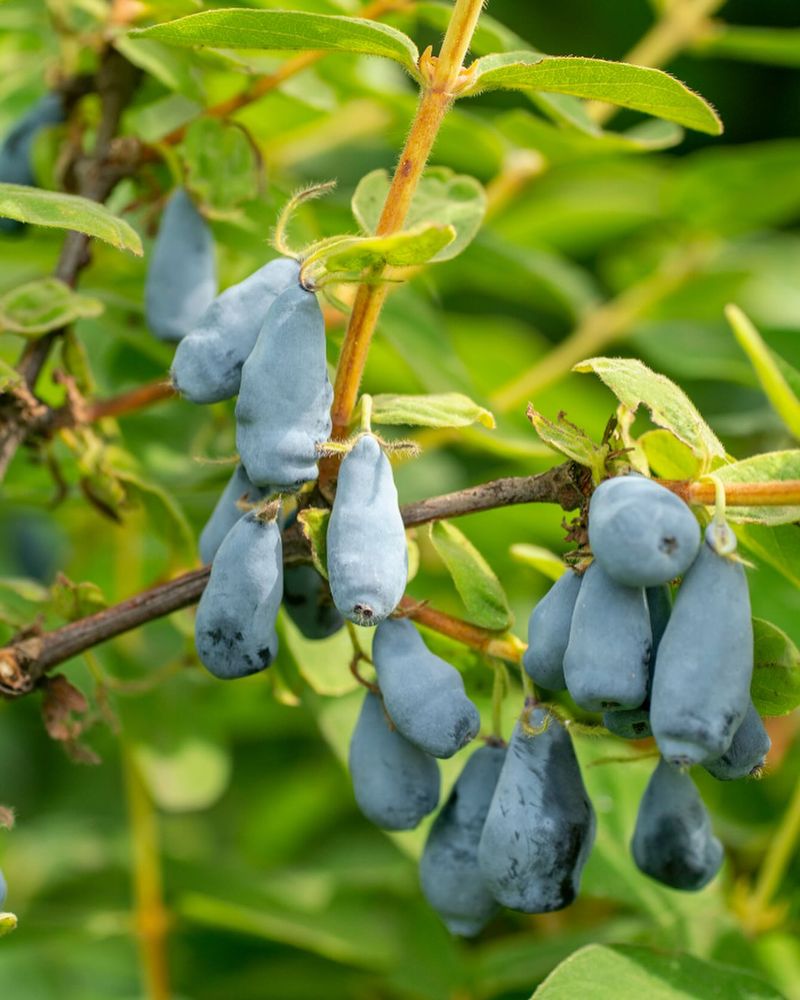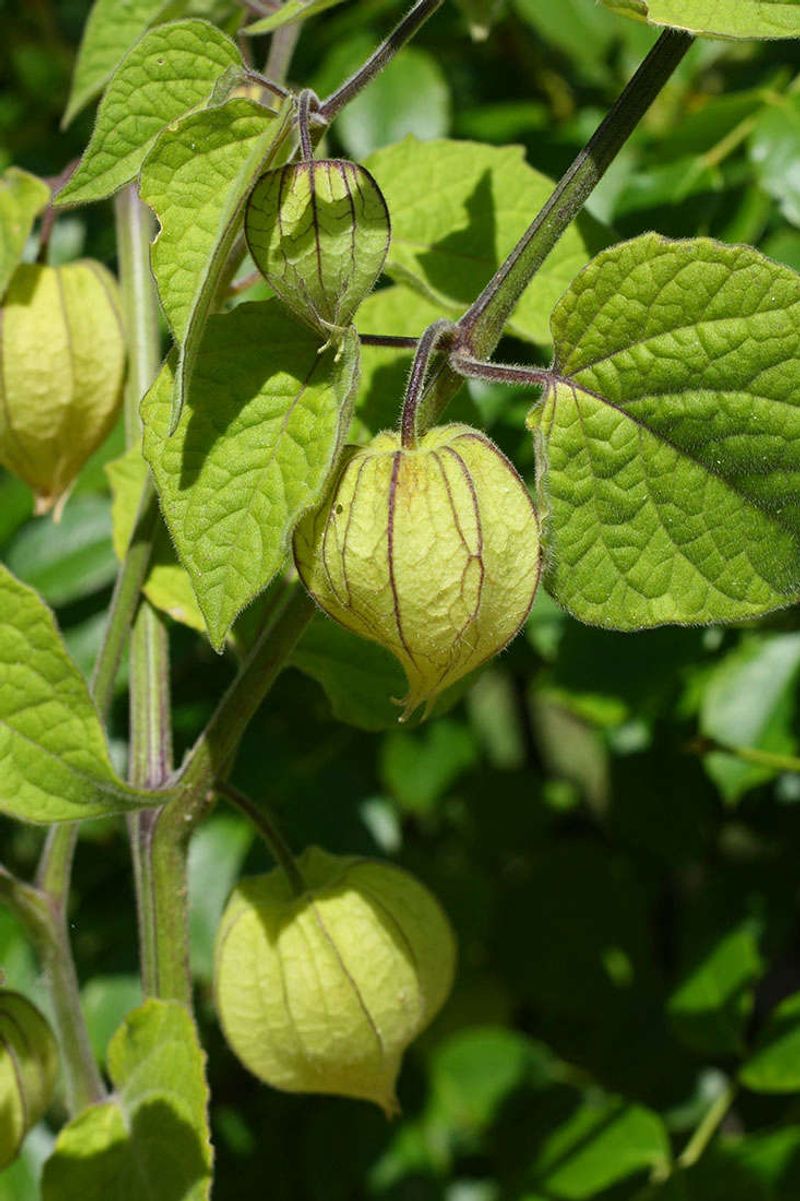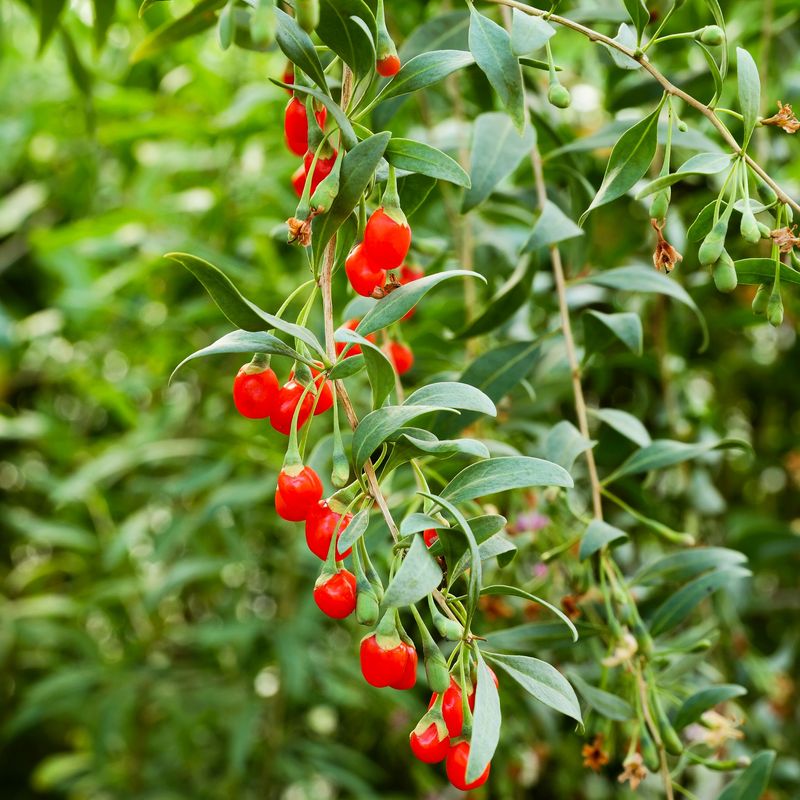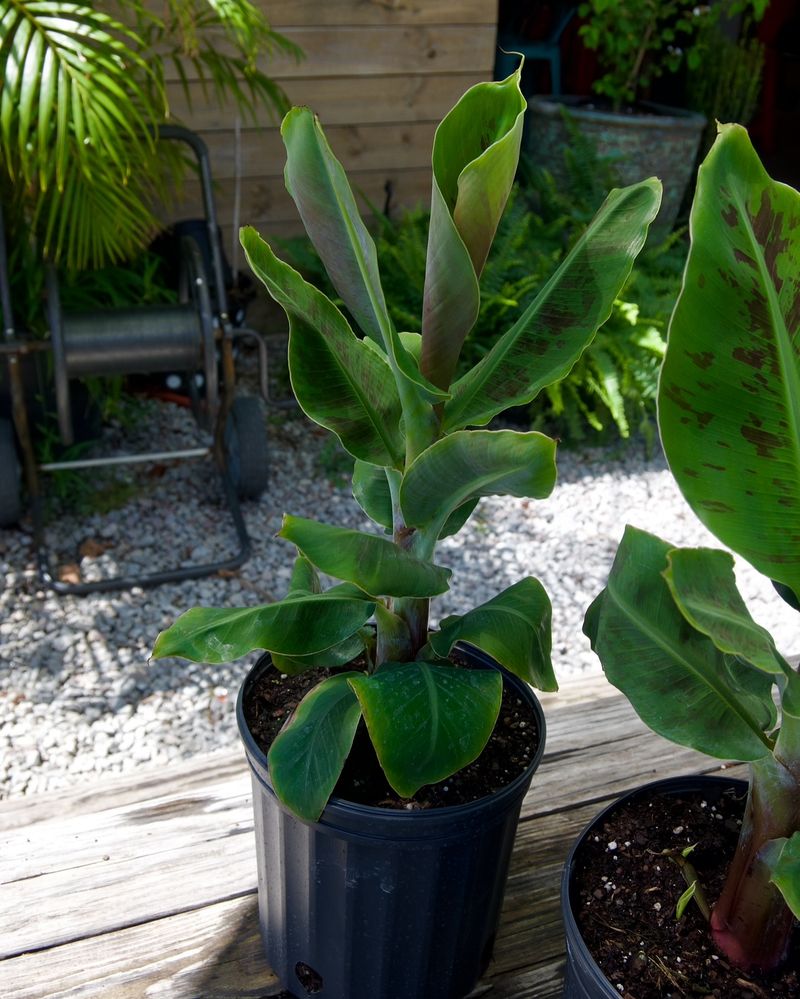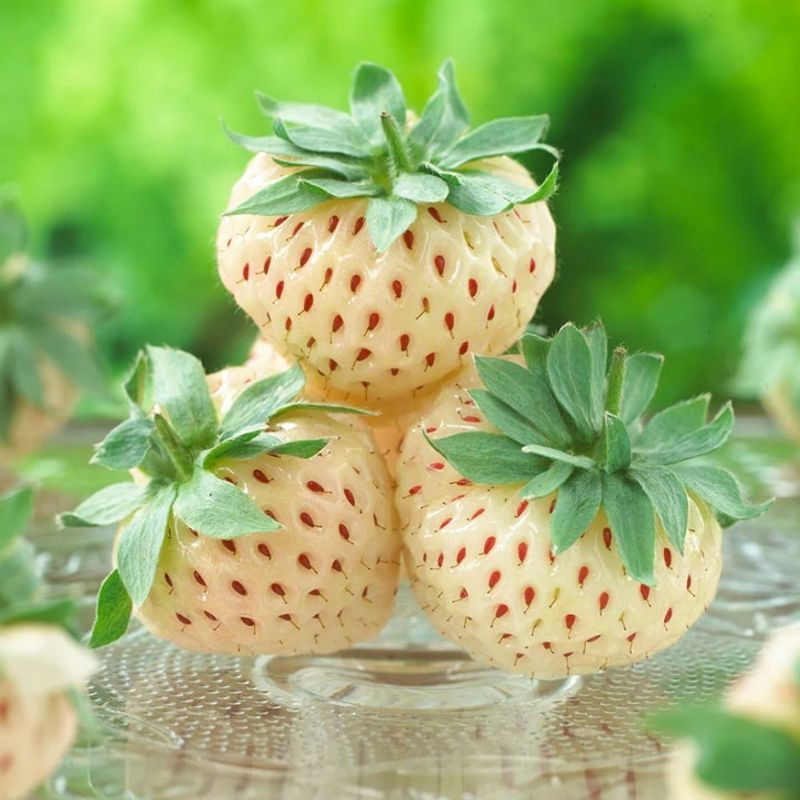Growing your own fruit always felt like something for the patient gardener—until I discovered how many varieties don’t take years to produce. Some fruits actually go from seed or seedling to harvest in just a few short months, and once I tried a few, I was hooked. There’s something so satisfying about snacking on something you grew faster than expected.
Even with limited space, like a small yard or sunny balcony, these quick producers can thrive in pots or tucked between other plants. I’ve grown juicy strawberries in hanging baskets and picked fresh cucamelons right off the vine on my patio. It’s an easy way to enjoy fresh produce without the long wait. If you’re looking for fast rewards, these speedy fruit options are worth trying.
They’re not just practical—they make gardening feel a little more magical. Let’s dig into the ones that deliver results fast and keep you coming back for more.
1. Strawberries
You’ll be amazed at how quickly these red gems can produce fruit. When planted from established seedlings in early spring, many varieties start producing sweet berries in just 60 days. I’ve had success even in my small container garden on the patio.
The plants spread through runners, creating new plants as they grow. This natural multiplication means your initial investment keeps paying off season after season. For the fastest results, look for day-neutral varieties like ‘Seascape’ or ‘Albion’.
Harvest typically begins in late spring and can continue through early fall with proper care. My favorite part is watching kids discover how much sweeter homegrown strawberries taste compared to store-bought ones!
2. Blackberries
Starting your blackberry patch brings faster rewards than most people realize. Unlike other brambles, these generous plants can produce fruit in their very first year when you choose primocane varieties like ‘Prime-Ark Freedom’ or ‘Prime-Jim’.
The secret lies in their unique growth habit – these special cultivars fruit on first-year canes. Expect juicy berries approximately 14-16 weeks after planting if you start with established plants in spring. My patch started producing by mid-summer the same year I planted it.
Morning harvests yield the firmest berries with the richest flavor. Train your plants along a simple trellis system to keep pathways clear and make picking easier when those plump, dark berries start arriving.
3. Raspberries
Quick gratification comes standard with fall-bearing (primocane) raspberries. These varieties can produce a harvest in their very first season, typically within 3-4 months of planting. The plants grow vigorously, sending up new canes that flower and fruit by late summer.
Getting started is surprisingly simple – just ensure good drainage and plenty of sun. Varieties like ‘Caroline’ and ‘Heritage’ are particularly reliable for first-year production. Last year, I planted bare-root canes in March and was picking handfuls of berries by August.
The sweet-tart flavor profile makes these berries perfect for fresh eating or quick preserves. Unlike many fruits, raspberries stop ripening once picked, so harvest only when they’re fully colored and slip easily from the plant.
4. Alpine Strawberries
Smaller than their commercial cousins, alpine strawberries deliver intense flavor bombs in tiny packages. These woodland gems start producing within 5 months from seed, making them among the fastest perennial fruits you can grow. The plants form neat, compact mounds perfect for borders or containers.
What they lack in size, they make up for in production speed and flavor intensity. Growing these little treasures has completely changed my understanding of what a strawberry should taste like – imagine wild berry essence concentrated into marble-sized fruits.
Harvest runs from late spring through fall, with peaks during early summer. Since they don’t send out runners like regular strawberries, they stay right where you plant them, making maintenance incredibly simple for busy gardeners.
5. Cantaloupe
Sweet, aromatic cantaloupes transform from seed to harvest-ready fruit in just 80-90 days. The vines spread enthusiastically across the garden, setting fruit after their yellow blossoms fade. For even faster results, start with nursery seedlings instead of seeds.
Growing these netted melons requires little more than warm soil, consistent moisture, and plenty of sunshine. The fruits develop their characteristic sweet fragrance when ripening approaches. My first attempt yielded melons much earlier than expected – I nearly missed their perfect harvest window!
You’ll know they’re ready when the stem begins to crack where it meets the fruit, and the netting pattern becomes pronounced. Nothing compares to the flavor of a sun-ripened cantaloupe picked at the peak of perfection.
6. Watermelon
Speedy satisfaction comes in the form of early-maturing watermelon varieties that race from planting to harvest in just 75 days. ‘Sugar Baby’ and ‘Early Moonbeam’ are particularly fast performers, producing personal-sized melons perfect for small families.
The sprawling vines need space to roam, though container-friendly varieties now exist for patio gardeners. These heat-lovers transform summer sunshine into sweet, juicy flesh that’s worth every inch of garden space they occupy.
Knowing when to harvest requires attention to subtle changes. Look for the curly tendril nearest the fruit stem to brown and dry out completely. The underside spot where the melon touches the ground also changes from white to creamy yellow when ripeness approaches – a trick I learned after picking my first one too early.
7. Ground Cherries
Wrapped in nature’s own packaging, ground cherries deliver tropical flavor notes from plants that mature with surprising speed. These husked fruits, related to tomatillos, develop from seed to harvest in roughly 70 days, dropping to the ground when perfectly ripe.
The paper lantern-like husks protect sweet-tart fruits that taste like pineapple with hints of vanilla. Growing them for the first time last season completely surprised me – they started producing much earlier than expected and continued until frost.
Harvesting happens differently than with other fruits – simply collect the husked fruits that have fallen to the ground. They store remarkably well in their husks, lasting weeks on the counter or months in the refrigerator, extending your enjoyment long after harvest.
8. Blueberries (Container Varieties)
Compact blueberry varieties bred specifically for containers can provide fruit much faster than their larger cousins. ‘Top Hat’ and ‘Northsky’ dwarf cultivars often produce berries in their very first season, typically ready for harvest within 4-5 months of spring planting.
These pint-sized powerhouses grow just 1-2 feet tall, making them perfect for patios and small spaces. The key to success lies in providing acidic soil and consistent moisture. My container blueberries surprised me by producing a modest but delicious crop just months after planting.
While not as productive as mature bushes, these quick starters offer the perfect introduction to growing berries. Expect harvests to increase substantially in subsequent years as the plants mature, all while maintaining their compact, manageable size.
9. Passion Fruit
Surprisingly quick to bear fruit in warm climates, passion fruit vines can go from planting to first harvest in under a year. The purple varieties tend to produce faster than the yellow types, with some gardeners reporting fruit in as little as 6-8 months from established plants.
The exotic flowers alone make this vine worth growing, but the tropical-flavored fruits are the real reward. My south-facing fence became a passion fruit showcase after just one growing season, with the first fruits appearing much sooner than I’d anticipated.
Harvest happens naturally as ripe fruits drop from the vine. The wrinkled appearance that might look concerning on other fruits actually indicates perfect ripeness for passion fruit – the more wrinkled, the sweeter and more developed the flavor will be.
10. Kiwi Berries
Much faster to fruit than their larger cousins, hardy kiwi berries (Actinidia arguta) can produce their first crop within 2-3 years of planting – lightning speed in the fruit world. These grape-sized fruits offer all the tropical flavor of regular kiwis but without the fuzzy skin.
Growing on vigorous vines that need sturdy support, these cold-hardy plants produce smooth-skinned mini kiwis that can be popped whole into your mouth. Unlike many fruits, they ripen all at once, usually in late summer or early fall.
For successful fruiting, you’ll need both male and female plants, with one male able to pollinate up to eight females. My experience with these little gems has been rewarding – the wait is shorter than expected and the unique flavor makes them a conversation piece at garden gatherings.
11. Figs
Container-grown fig trees can surprise impatient gardeners with their relatively quick fruiting timeline. Certain varieties like ‘Improved Brown Turkey’ and ‘Chicago Hardy’ often produce their first figs within the same year of planting when started with a good-sized young tree.
These ancient fruits develop without requiring pollination, forming directly from the branch in a fascinating botanical process. Restricting roots by growing in containers actually encourages earlier fruiting. The first season I grew my potted fig, it produced a modest but delicious late summer crop that had me hooked.
Some varieties produce two crops annually – an early “breba” crop on last year’s wood and a main crop on new growth. For the fastest results, select a variety known for reliable breba crops in your climate zone.
12. Gooseberries
Ready to harvest much sooner than most people realize, gooseberry bushes often produce their first berries just one year after planting. These tart-sweet fruits develop on thorny bushes that maintain a manageable size, perfect for smaller gardens.
Growing to just 3-5 feet tall, these understated shrubs produce translucent berries that range from green to red to purple, depending on variety and ripeness. The plants thrive in cooler climates where many other fruits struggle. My northern garden’s gooseberries consistently provide the first fruit harvest of the season.
Early harvests of tart berries work perfectly for cooking, while letting them ripen fully on the bush develops their sweetness for fresh eating. With minimal care requirements and resistance to most pests, these European favorites deserve more space in American gardens.
13. Mulberries (Dwarf Varieties)
Dwarf mulberry varieties like ‘Dwarf Everbearing’ break the slow-growing tree stereotype by producing fruit in as little as one year after planting. These compact versions grow just 6-8 feet tall rather than the 30+ feet of standard mulberry trees.
The finger-staining berries resemble elongated blackberries and offer a perfect balance of sweetness with subtle tartness. Birds love them too, so netting might be necessary if you want to enjoy the harvest yourself. My container-grown dwarf started producing its first berries much earlier than I expected.
Harvest season typically runs for several weeks in early summer, with berries ripening gradually rather than all at once. Simply spread a sheet beneath branches and gently shake – truly ripe berries will fall right into your collection cloth.
14. Honeyberries
Gaining popularity for their blueberry-like flavor and incredible cold hardiness, honeyberries (haskap) produce fruit remarkably quickly for a woody shrub. These blue elongated berries often appear within the first or second year after planting, ready for harvest in very early summer.
Beating most other fruits to ripeness by weeks, these Siberian natives thrive where winters turn bitterly cold. The unique elongated berries taste like a blend of blueberry, raspberry, and black currant. My first honeyberry harvest came when snow was still visible on distant mountains – weeks before any other fruit in the garden.
For successful fruiting, plant at least two different compatible varieties to ensure proper pollination. The bushes maintain a manageable size of 3-5 feet, perfect for smaller spaces or mixed into ornamental landscapes.
15. Cape Gooseberry
Wrapped in papery husks like tiny Chinese lanterns, cape gooseberries deliver tropical flavor from plants that produce with impressive speed. From seed to first harvest takes approximately 70-80 days, with plants continuing to produce for months afterward.
The golden-orange berries have a complex sweet-tart flavor reminiscent of pineapple and vanilla. Growing to about 3 feet tall, the plants produce dozens of husked fruits that indicate ripeness when they turn from green to tan and fall from the plant. My first attempt growing these resulted in a surprisingly abundant harvest that kept coming until frost.
Unlike ground cherries (their close relative), cape gooseberries grow larger and develop a more tropical flavor profile. They store remarkably well in their protective husks, lasting weeks at room temperature or months in the refrigerator.
16. Goji Berries
Despite their exotic reputation, goji berries grow surprisingly quickly once established. These nutrient-packed red berries often begin appearing on plants within their first year, with production increasing dramatically in subsequent seasons.
The sprawling shrubs produce small bright red berries along their stems throughout summer and into fall. While the plants can eventually reach 8-10 feet, they respond well to pruning for size control. My container-grown goji surprised me by flowering and setting fruit just months after planting.
Fresh berries have a unique sweet-tart flavor quite different from the dried versions commonly found in stores. Harvest is a continuous process rather than a single event – simply pick the bright red berries as they ripen, leaving the orange ones to develop further.
17. Dwarf Banana
Container-friendly dwarf banana varieties like ‘Dwarf Cavendish’ and ‘Super Dwarf Cavendish’ can produce fruit much faster than you might expect. In ideal conditions, these compact plants can go from purchase to harvest in 10-15 months – lightning speed for a tropical fruit.
Growing just 4-7 feet tall (compared to 20+ feet for standard bananas), these varieties work well in large containers that can be moved indoors during winter in colder climates. The emerging flower stalk signals that fruit production has begun. My sunroom banana surprised everyone by producing a small but delicious bunch after just one year.
While not as massive as commercial bunches, homegrown bananas offer superior flavor and the satisfaction of growing a tropical fruit in non-tropical settings. The key to success is providing consistently warm temperatures, bright light, and regular feeding.
18. Pineberries
Looking like strawberries in reverse – white with red seeds – pineberries deliver their first harvest with remarkable speed. These unique berries, which taste like strawberries with pineapple notes, typically begin producing within 2-3 months of planting established runners.
Growing exactly like regular strawberries, pineberries spread through runners and prefer the same conditions. The striking appearance makes them a conversation piece in any garden. My first season growing these unusual fruits yielded a modest but fascinating harvest that continued improving into the second year.
For best results, plant alongside regular red strawberries – they’re excellent pollinators for each other while creating a striking visual contrast in the garden. Harvest season typically aligns with regular strawberries, giving you two distinctly different flavors to enjoy simultaneously.

